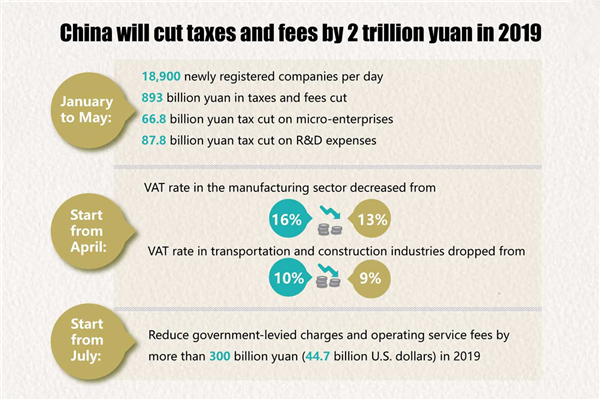Australia R&D support for SMEs plays a vital role in addressing the challenges faced by small and medium-sized enterprises in their quest for innovation. As the nation strives to enhance its research and development landscape, these businesses are hampered by unclear tax incentives and limited collaboration opportunities. The need for effective R&D funding in Australia is more pressing than ever, as SMEs navigate complex innovation challenges amidst rising operational costs. Experts from KPMG have called for R&D tax reform to provide clearer pathways for smaller enterprises to access the benefits they need for growth. By creating robust innovation hubs in Australia, we can unlock new potential and ensure that SMEs can thrive on the global stage.
The emphasis on boosting innovation within Australia’s small and medium enterprises is increasingly recognized as crucial to the nation’s economic growth. In light of this, the Australian government must reevaluate its strategies for research and development support tailored for these enterprises. Addressing innovation hurdles faced by SMEs, such as the lack of clarity in R&D tax incentives and collaboration avenues, is essential. KPMG’s proposals for reforming the R&D tax system stand to benefit businesses striving to innovate in a competitive marketplace. To maximize the impact of research funding, establishing innovation centers where cooperation between startups and researchers flourishes could pave the way for transformative advancements.
The Importance of R&D Funding for SMEs in Australia
R&D funding in Australia is a critical lifeline for small and medium enterprises (SMEs) striving to innovate and remain competitive. As discussed by experts, the need for a national R&D funding framework aligned with Australia’s National Science and Research Priorities is essential for providing a clear direction to SMEs. Companies that harness R&D funding can access vital resources that empower them to explore new ideas, develop products, and improve processes. Furthermore, increased financial support can mitigate the existing barriers SMEs face in adopting new technologies or improving their service offerings.
Despite the proposed frameworks, it is imperative to recognize that many SMEs in Australia currently face an uphill battle regarding R&D investments. High operational costs, coupled with complex tax systems that govern R&D tax incentives, create significant challenges for these enterprises. Small businesses often lack the resources to decipher the fine print of these incentives or to embark on collaborative projects with larger organizations. Therefore, addressing these issues and establishing a streamlined approach to R&D funding are fundamental for fostering an innovative culture among SMEs across Australia.
Navigating SMEs Innovation Challenges in Australia
Innovation challenges for SMEs in Australia are multifaceted, often stemming from insufficient support systems and a fragmented R&D landscape. Many small businesses struggle with identifying suitable funding opportunities and collaborative partnerships, impacting their capacity to innovate effectively. A significant number of SMEs lack access to the resources available through innovation hubs and fail to engage with research institutions, leaving them at a disadvantage compared to larger corporations that can more easily navigate these ecosystems.
Additionally, the challenges posed by compliance and administrative duties can overwhelm SMEs, which may not have dedicated teams to handle such requirements. Consequently, valuable time and energy that could be directed toward innovative projects are instead lost navigating administrative hurdles. To overcome these obstacles, experts argue that the government needs to simplify regulations surrounding R&D tax incentives and create a more supportive environment that promotes partnerships between SMEs and research-focused organizations.
The Role of R&D Tax Reform in Boosting Innovation
R&D tax reform is essential for providing SMEs with the financial relief they desperately need to foster innovation. Current tax incentives often come laden with complexities that deter smaller firms from investing in R&D activities. Experts like Georgia King-Siem from KPMG emphasize the need for clearer guidelines and an easier application process, which could encourage more SMEs to engage in high-risk innovation. By reforming these tax policies to feature more transparent criteria, the government can enhance accessibility for SMEs looking to leverage tax benefits for their R&D efforts.
Furthermore, tax reform can play a pivotal role in aligning investment with Australia’s innovation goals. By ensuring that the R&D Tax Incentive is not only user-friendly but also reflective of the current market demands, SMEs would be better positioned to partake in experimental developments. This focus on high-risk innovation could lead to breakthroughs that benefit the broader Australian economy, making it crucial for policymakers to prioritize R&D tax reform as part of their strategy to enhance national competitiveness.
Establishing Innovation Hubs Across Australia
Innovation hubs have emerged as a vital part of Australia’s strategy to bolster collaboration and support R&D among SMEs. These collaborative ecosystems combine researchers, entrepreneurs, and investors within shared spaces, thereby facilitating exchange and fostering innovation. By establishing innovation hubs throughout Australia, policymakers aim to address the current disconnect between SMEs and academic institutions or large corporations. Such settings would provide SMEs with access to cutting-edge facilities, funding opportunities, and mentorship, easing the burden of R&D involvement.
Moreover, innovation hubs can serve as a bridge to help SMEs overcome significant obstacles in the innovation process, including limited knowledge sharing and resource allocation. With a focus on collaboration, these hubs can encourage joint ventures and partnerships that lead to groundbreaking products and services. For businesses that often operate in isolation, being a part of a hub could significantly enhance their networking opportunities and development potential, ultimately contributing to a more vibrant and innovative national economy.
Streamlined Government Support Programs for SMEs
The fragmentation of government support programs has become a significant hurdle for SMEs pursuing innovation. With various programs frequently launched and discontinued, SMEs encounter uncertainty and inconsistency that stifles their R&D efforts. As expert reports—such as those from KPMG—highlight, there is an urgent need to streamline these programs to help provide a stable foundation for SMEs investing in R&D. By creating a more cohesive set of support initiatives, SMEs would be better equipped to make informed investments into their innovation processes.
Additionally, a unified support framework would mitigate the high compliance costs that often hinder SMEs from fully participating in R&D. Offering tailored incentives that cater specifically to the unique needs of SMEs can transform the innovation landscape. Programs that are designed to be straightforward and accessible will provide the necessary encouragement for smaller companies to embark on innovative projects, ultimately enhancing Australia’s ability to compete on a global stage.
The Impact of KPMG’s R&D Proposals
KPMG’s proposals regarding R&D reform shed light on several pressing issues facing SMEs in Australia today. By establishing clear targets for R&D investment and simplifying tax incentives, KPMG aims to address the significant gaps restricting SMEs from realizing their full innovation potential. These recommendations are critical for businesses that have been historically marginalized within the complex R&D funding landscape, as they strive to contribute to Australia’s overall economic growth and innovation.
Moreover, KPMG’s focus on collaborative ecosystems—such as innovation hubs—and improved government support mechanisms highlights the urgency for reform. Implementing these proposals could lead to more cohesive partnerships between SMEs and larger entities, encouraging knowledge transfer and enhancing competitiveness. By adopting KPMG’s insights, Australia could cultivate a robust environment that not only supports innovative endeavors but also nurtures the next generation of transformative businesses.
Overcoming Barriers to R&D Investment for SMEs
The barriers to R&D investment for SMEs in Australia are pronounced and multifaceted. High operational costs, lack of access to expertise, and uncertainties surrounding tax incentives significantly impede small businesses from capitalizing on R&D opportunities. For many SMEs, the fear of navigating the complex funding landscape and the associated health risks of innovation can deter them from even considering engaging in R&D activities. Recognizing these obstacles is the first step towards formulating solutions that enable SMEs to invest in and sustain innovative practices.
To overcome these challenges, strategies must be developed that not only emphasize clearer tax benefits but also promote entrepreneurship through education and outreach initiatives. By providing resources that guide SMEs through the R&D process—such as dedicated support centers or funding education programs—Australia could help demystify the landscape and empower smaller businesses to invest confidently in innovation. This proactive approach will be instrumental in developing a competitive market that thrives on creative problem-solving and is built upon the foundation of robust R&D investments.
The Future of SMEs and R&D in Australia
As Australia looks to the future, the synergy between SMEs and R&D will play a pivotal role in shaping the national economy. With a growing awareness of the importance of innovation to address global challenges, SMEs must be integrated into the R&D ecosystem more effectively. Efforts to enhance collaboration, streamline funding processes, and foster partnerships through innovation hubs will be crucial to unlocking the potential of smaller enterprises. If SMEs are enabled to thrive, their contributions can lead to significant advancements in various sectors, from technology to green solutions.
Additionally, fostering a culture of innovation within SMEs requires ongoing support from the government, industry leaders, and academic institutions. This collaborative approach can ensure that the innovative capacities of SMEs are maximized, providing them with opportunities to not only compete locally but also succeed on a global scale. As policymakers pay attention to the dynamics of SMEs and implement necessary reforms, Australia could pave its way as a beacon of innovation for small businesses, reflecting a well-supported and vibrant economic landscape.
Frequently Asked Questions
What R&D funding options are available for SMEs in Australia?
In Australia, SMEs can access several R&D funding options, including the R&D Tax Incentive, which offers tax offsets for eligible R&D expenses. Additionally, government grants and programs, such as the Innovation and Science Australia initiatives, support SMEs in their innovation journeys. Establishing clear targets aligned with Australia’s National Science and Research Priorities can enhance these funding opportunities.
How does the R&D tax reform impact SMEs in Australia?
The R&D tax reform is designed to make the tax incentive system more accessible for SMEs in Australia. Simplifying eligibility assessments and providing clear guidelines can alleviate the burdens SMEs face in claiming their benefits. KPMG recommends that reforms should focus on improving clarity and reducing compliance costs, making it easier for small businesses to engage in R&D activities.
What are the challenges faced by SMEs in accessing R&D support in Australia?
SMEs in Australia often encounter challenges such as ambiguous tax incentives, limited collaboration opportunities with research institutions, and high operational costs. Complicated eligibility assessments for tax incentives can discourage SMEs from pursuing R&D funding. To address these issues, establishing innovation hubs could facilitate better access to resources and support.
What role do innovation hubs play in supporting SMEs’ R&D processes in Australia?
Innovation hubs serve as collaborative ecosystems where SMEs can interact with researchers, investors, and other entrepreneurs, providing essential resources and mentorship for R&D. These hubs are crucial in overcoming the barriers SMEs face, such as lack of access to modern infrastructure and funding. By fostering collaboration, innovation hubs significantly enhance the potential for successful R&D outcomes.
How can the Australian government improve R&D support for SMEs?
To better support SMEs in their R&D efforts, the Australian government should streamline R&D funding programs, clarify tax incentive eligibility, and foster collaborations across sectors. Creating stable and predictable support frameworks, such as innovation hubs, can also facilitate innovation and help SMEs capitalize on their R&D investments.
What impact does KPMG suggest regarding R&D investment growth in Australia?
KPMG highlights that while Australia has seen an increase in R&D investment, reaching $26.5 billion last year, significant disparities exist across industries. The firm stresses the importance of creating a cohesive R&D ecosystem that prioritizes clarity in tax incentives and fosters collaboration among SMEs, universities, and research institutions to elevate Australia’s innovation capacity.
| Key Point | Details |
|---|---|
| Overview of R&D Challenges for SMEs | SMEs in Australia face difficulties navigating R&D due to complex tax incentives, limited collaboration opportunities, and high operational costs. |
| Investment in R&D | $26.5 billion was invested in R&D last year, but SMEs remain disadvantaged due to existing frameworks. |
| Need for a National R&D Framework | Experts stress a streamlined R&D framework is needed to support SMEs and improve innovation outcomes. |
| Tax Incentives | The R&D Tax Incentive suffers from delays and complicated assessments, discouraging SMEs from utilizing them. |
| Collaboration Opportunities | KPMG suggests creating innovation hubs to enhance collaboration between SMEs, research institutions, and universities. |
| Government Support | Consistent and streamlined government support programs are vital to provide stability and encourage R&D investment. |
Summary
Australia R&D support for SMEs is crucial as small and medium enterprises face significant challenges in enhancing their research and development capabilities. The existing frameworks and incentives must be reformed to provide clearer guidance and greater accessibility, ensuring that SMEs can fully capitalize on available R&D opportunities. By fostering collaboration through innovation hubs and streamlining government support, Australia can cultivate a robust and dynamic ecosystem that inspires innovation and drives economic growth for its SMEs.



